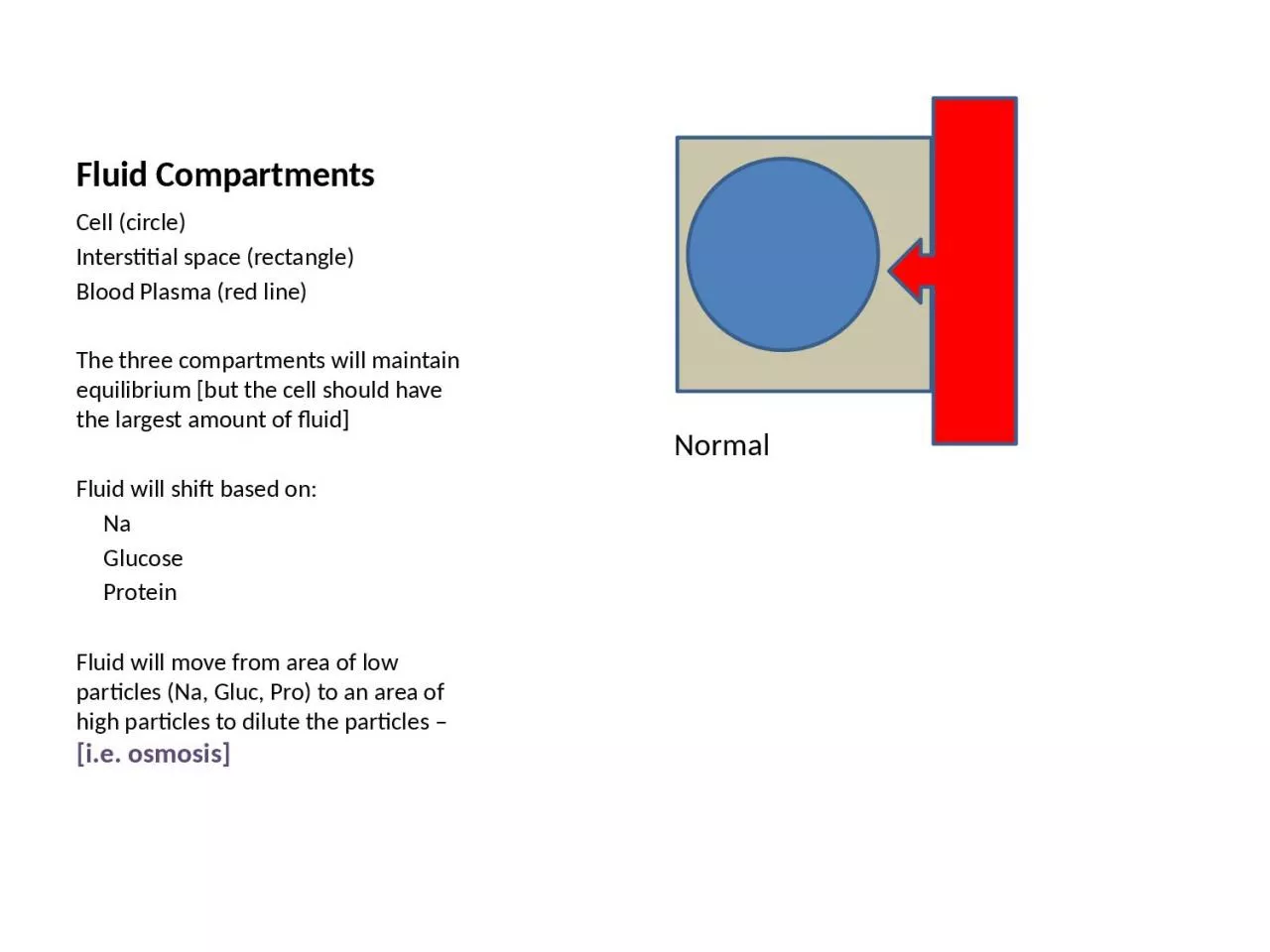

Interstitial space rectangle Blood Plasma red line The three compartments will maintain equilibrium but the cell should have the largest amount of fluid Fluid will shift based on Na ID: 928024
Download Presentation The PPT/PDF document "Fluid Compartments Cell (circle)" is the property of its rightful owner. Permission is granted to download and print the materials on this web site for personal, non-commercial use only, and to display it on your personal computer provided you do not modify the materials and that you retain all copyright notices contained in the materials. By downloading content from our website, you accept the terms of this agreement.
Slide1
Fluid Compartments
Cell (circle)
Interstitial space (rectangle)Blood Plasma (red line)The three compartments will maintain equilibrium [but the cell should have the largest amount of fluid]Fluid will shift based on: Na Glucose ProteinFluid will move from area of low particles (Na, Gluc, Pro) to an area of high particles to dilute the particles – [i.e. osmosis]
Normal
Slide2Intracellular/interstitial dehydration
Particles in the plasma increase:
high glucose (DKA, HHS)
high protein (liver fail)
high sodium (dietary intake)
Fluid will move from the cell/interstitial space
INTO
the plasma to dilute the particles and create equilibrium.However, the plasma will now have a large amount of fluid volume (fluid volume overload) – could be problem with poor heart or kidney function – might also create problem in lungs.
Glucose molecule
Intercellular dehydration/plasma overload
Slide3Pulls fluid
Hypertonic (more particles)
Fluid will move INTO plasmaTypes of fluidsIsotonic Is the same osmolarity as the blood plasma. Will NOT move fluid, only fills the vessel
up (ECF). Hypertonic Is hyperosmolar compared to plasma. Fluid will move from cell/interstitial space
INTO the plasma via osmosis to dilute the particles.Hypotonic Is hypo-osmolar
compared
to plasma. Fluid will move FROM the plasma into the interstitial space/cells to dilute increased particles and rehydrate the cells. Isotonic (equal with plasma)No movementNS, D5W, LR3% NSHypotonic (less particles)
Fluid will move INTO cells/interstitial space
Pushes fluid
1/2NS